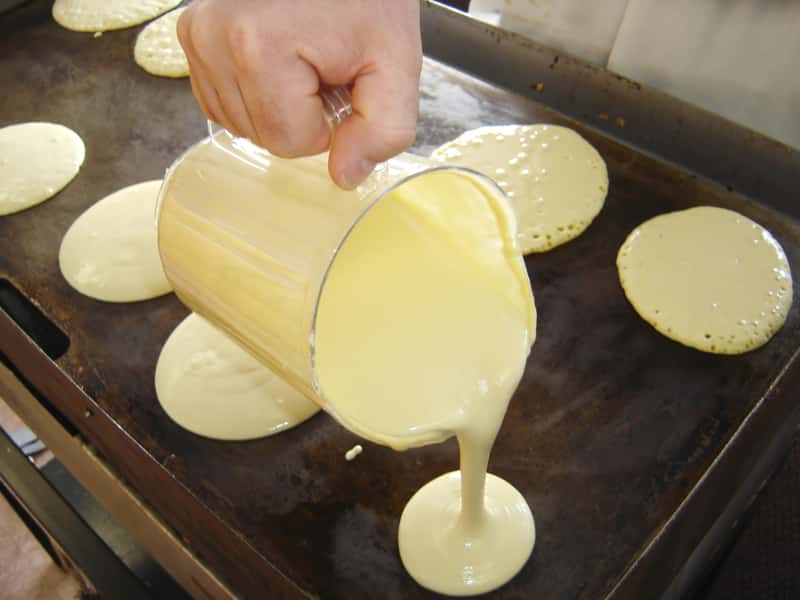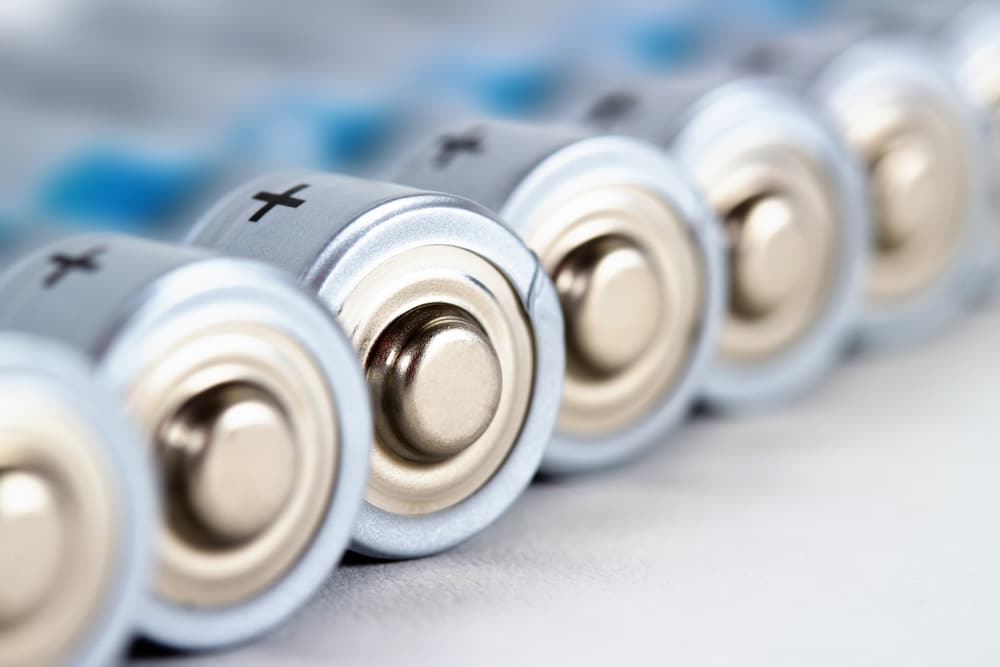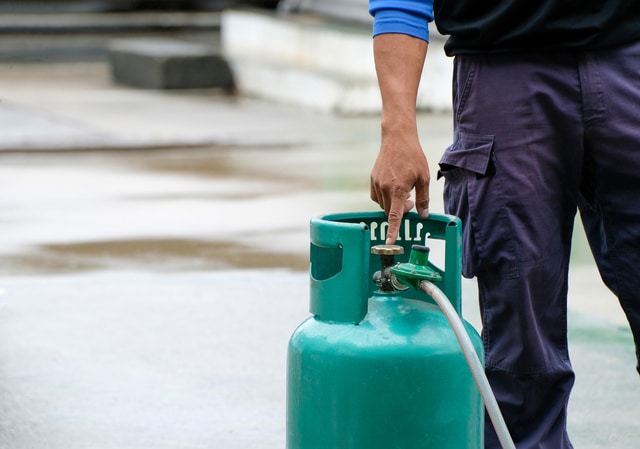
Blackstone has the finest griddles that are simple to operate and season. The griddles are designed with a grease management system and temperature control that promises a better grilling experience.
The griddles are designed with an igniter that helps spark the flame that cooks the food. However, if the igniter is not working, the griddle will fail to turn on or cook your food. Let’s see which solutions you can try!
Fixing Blackstone Igniter Not Working
- Check The Battery
First of all, you have to check the battery of your griddle as it’s responsible for powering the igniter and helps produce a spark on the igniter. So, if the battery is weak, it won’t be able to power on the igniter.
For this reason, you have to locate the battery on your griddle and make sure it is fully charged. The easy solution is to recharge the battery, but the experts recommend replacing the weak battery with a new one.
On the other hand, if the battery is adequately charged, check its terminals for corrosion. That’s because the corroded terminals won’t be able to transmit the power to the igniter, and it won’t turn on.
The corrosion can be cleaned with a contact cleaner, or you can use a DIY mix of vinegar and baking soda.
- Igniter Needle
An igniter needle sends the spark to the griddle and helps produce a flame. However, if the igniter is not sending the spark to the griddle, it’s likely that the igniter needle is damaged, which impacts its ability to burn propane.
So, inspect the needle and replace it with a new one (there are universal igniter needles available in the market that you can use).
However, before you replace the needle, make sure it’s properly placed on the burner’s propane source – an incorrect position means propane won’t catch the spark, and the igniter won’t produce a flame. So, check the igniter needle and make sure it’s correctly positioned.
- Dirty Or Corroded Electrodes
The igniters often come in contact with debris that is produced by cooking food, such as food particles, grease, and fumes. This junk often covers the electrodes and impacts the igniter’s ability to work.
For this reason, we recommend that you access the igniter’s electrodes and use rubbing alcohol on a cotton swab to clean the dirty or greased electrodes. However, you have to be gentle while cleaning the electrode’s metal tip.
The electrode has to be dried up before you turn on the griddle. On the other hand, if the electrode has corrosion, you have to use sandpaper to scrape off the corrosion.
- Loose Electrodes
You have to check the electrode because loose electrodes can also impact the igniter’s function. The electrodes are designed with a ceramic tube and a metal tip – the metal tip creates the spark, which ignites the burner.
The electrode is located near the burner, and you must inspect it as well as the surrounding wire connections. You’ll have to turn off the griddle and inspect the electrodes to make sure the metal tips are intact – there must be no breaks or cracks.
If the metal tip is damaged, you have to replace the entire electrode. On the other hand, if there is no damage to the metal tip and electrodes, you have to check the wires. It’s common for the wires to the fray over time, given their exposure to moisture, and the frayed ones should be replaced.
Last but not least, make sure the electrodes and wire connections are tight and in the right position. For this purpose, you should disconnect the electrodes from the wires and reconnect them.
- Spark Generator
The spark generator works to create a spark in the igniter, which is sent to the burner. It is designed with the pulse principle that helps generate the continuous spark.
However, a damaged spark generator won’t be able to produce a spark, and the igniter won’t be able to operate the burner. The only solution is to replace the spark generator, and you can follow the below-mentioned steps;
- Shut off the griddle and make sure the controls knobs are set in the off position
- Locate the igniter box on the griddle and unscrew the front part by taking off screws, buttons, or knobs to loosen up the box
- Now, disconnect all the wires and take off the old igniter box.
- Then, take out the spark generator and install a new one but make sure you attach the wires correctly.
- Once the new spark generator has been installed, screw in the igniter box and fire up the grill.
In addition to replacing the spark generator, make sure the wires are properly plugged into the spark generator (the wires should be replaced as well if they are frayed).
- Weather
When the igniter’s electrodes are wet, they won’t be able to produce a spark, hence an issue with the igniter’s functionality. So, if it has recently rained and the griddle got wet, make sure you disassemble it and let all its parts dry out. In particular, the electrodes must be dry before you try turning on the griddle.
- Ignition Button
The ignition button is also known as an ignition switch, and it turns on the igniter whenever you have to use the griddle. The button is placed on the control panel of the griddle and makes a clicking sound whenever you turn it, and the igniter is turned on.
However, if the ignition button doesn’t make a clicking sound, it is damaged and must be replaced. In most cases, the wiring that connects the button and igniter is damaged, hence the connectivity issue.
If that’s the case, you must turn off the griddle and take off the ignition button. If the wire seems melted or frayed, we recommend installing a new one to ensure the passage of signals. In addition to replacing the wire, make sure the ignition button is cleaned.
This is because the button can catch grease and food particles, which jams it and makes it impossible to turn on the igniter. So, just use grease cleaner or dishwashing liquid to clean the grease but make sure the button is dried before you install it again.
- Propane Tank
If the igniter is not producing a spark, it’s likely that the griddle is not connected to the propane tank. So, check the coupling nut and make sure it’s connected to the cylinder valve of the tank.
In particular, the coupling nut must be turned approximately 0.5 to 1/3 quarters to make sure it’s tight. You can adjust the coupling nut by hand, as using tools can lead to stripping of the threads.
Once the nut is tightened up, connect the griddle, and the igniter will start receiving the fuel it’s needed to turn on.
- Regulator
The griddles are designed with a gas regulator that regulates the gas flow from the propane tank to the heating element of the griddle. It helps adjust the gas pressure, which is why it’s connected to the propane cylinder’s valve.
However, if the regulator is damaged, it won’t be able to optimize the flow of gas to the griddle, resulting in ignition issues. So, inspect the regulator and replace it if it’s damaged.
- Igniter
If you have tried all solutions, but the igniter is still not working, we recommend that you replace the igniter assembly because it might be damaged.
Fortunately, replacing the igniter is convenient, especially if your griddle has an all-in-one ignition module – these modules are connected behind the griddle’s control panel. However, if you don’t have experience in handling electrical components, you must hire an electrician.
The Bottom Line
An igniter is an important part of the griddle as it’s responsible for operating the griddle’s burners. However, if the igniter stops working, the griddle won’t be able to cook the food.
You can try the solutions mentioned in this article to fix the igniter. However, if some components have to be replaced, it’s better to hire an electrician.


